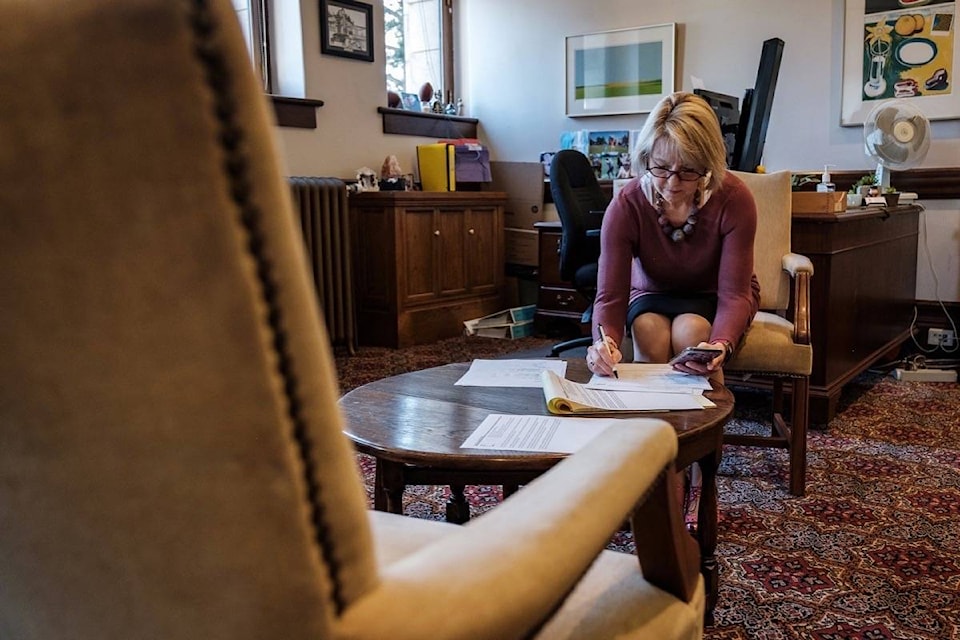By Dr. Bonnie Henry
VICTORIA - Now that we are well and truly into our COVID-19 pandemic response, many people throughout British Columbia and Canada have similar questions and concerns.
How bad is it going to get? How long do we have to be physically distant from others and put aside our regular routines? When can we get back to work, see our loved ones and book social events? I understand the anxiety and frustration that comes with this uncertainty.
One of the tools we in B.C., as well as other provinces and the federal government, have used to understand these issues is modelling. In late March, British Columbia was the first province to share its modelling. We contributed to the national modelling in early April, and have now released our latest report.
RELATED: B.C.’s latest COVID-19 modelling shows curve flattening
RELATED: Summer parades, fairs off the table for 2020, Henry says
COVID-19 hit the world like a Category 5 hurricane. The most recent B.C. modelling shows us that in the face of this storm, we have made considerable progress in our province. We have experienced significant damage, but are still standing strong.
I want each of you to know that this is for one reason: The immense efforts that you have taken to ‘batten down the hatches’ by being physically distant from others and following the orders and restrictions in place, are truly making a difference.
I also want everyone to know that we are in the eye of the hurricane right now, and to fully weather this storm, we must remain 100% committed.
The modelling from B.C. and elsewhere clearly shows that if we relax our measures too soon, we will face more severe and unnecessary damage.
So how does our modelling help? To begin, we must understand that modelling is not a crystal ball. Instead, it is a useful tool to understand the many situations that we in B.C, as well as people around the world, are in, and the many approaches being taken to flatten the curve. Here in B.C., we also use dynamic modelling to assess what is happening right now, in our province and around the world. This helps guide our decision-making for the future.
We are only as strong as our weakest links in society, so modelling also allows us to look over our shoulders at past indicators to see how we’ve done in our attempt to protect people. We can decide what we need to prepare for, and what we can fix right now. Modelling also helps us determine how much longer we need to protect our communities with physical distancing.
It is important to understand that all models are inherently imprecise, because they use assumptions that are based on imperfect data, and there is no way for us to know for sure what’s going to happen tomorrow. What we can attempt to see from modelling, though, is how we might influence the curve of a model ourselves, every day, by being extra careful about our physical distancing and other proven measures like cleaning our hands, covering our coughs and staying home when sick.
In B.C., we are committed to updating our modelling regularly so that everyone can see whether our efforts are successful, day to day, and what our possibilities are compared to other places in the world. We will continue to publish our ongoing epidemiologic curve, case counts and our test-positive rates each day on the BC Centre for Disease Control’s website.
In our latest presentation, we provided even more data: we have shared the demographics and the epidemiology that tell us who has been affected most by this virus - the age ranges, the locations and various types of epidemiological information - to help everyone get a better picture of who, where and when people in B.C. have been affected.
We are being transparent and open with this information because, as I know well, we all need hope and we all want to know how our actions are making a difference.
I also want to remind everyone that physically distancing from others does not mean being alone or without aid. Reaching out online and allowing community members to help in these challenging times can make a world of difference.
We want everyone to stand united and stay strong. Every British Columbian has a part to play in flattening the curve and making a difference. Let’s all continue together to be safe, be calm, be kind and do the right thing.
For the latest medical updates, including case counts, prevention, risks and testing, visit: www.bccdc.ca or follow @CDCofBC on Twitter.
For the provincial health officer’s orders, notices and guidance, visit: www.gov.bc.ca/phoguidance
For non-health related information, including financial, child care and education supports, travel, transportation and essential service information, visit: www.gov.bc.ca/COVID19
Or call 1-888-COVID19 (1-888-268-4319) between 7:30 a.m. and 8 p.m., seven days a week.
Dr. Bonnie Henry is B.C.’s provincial health officer.



